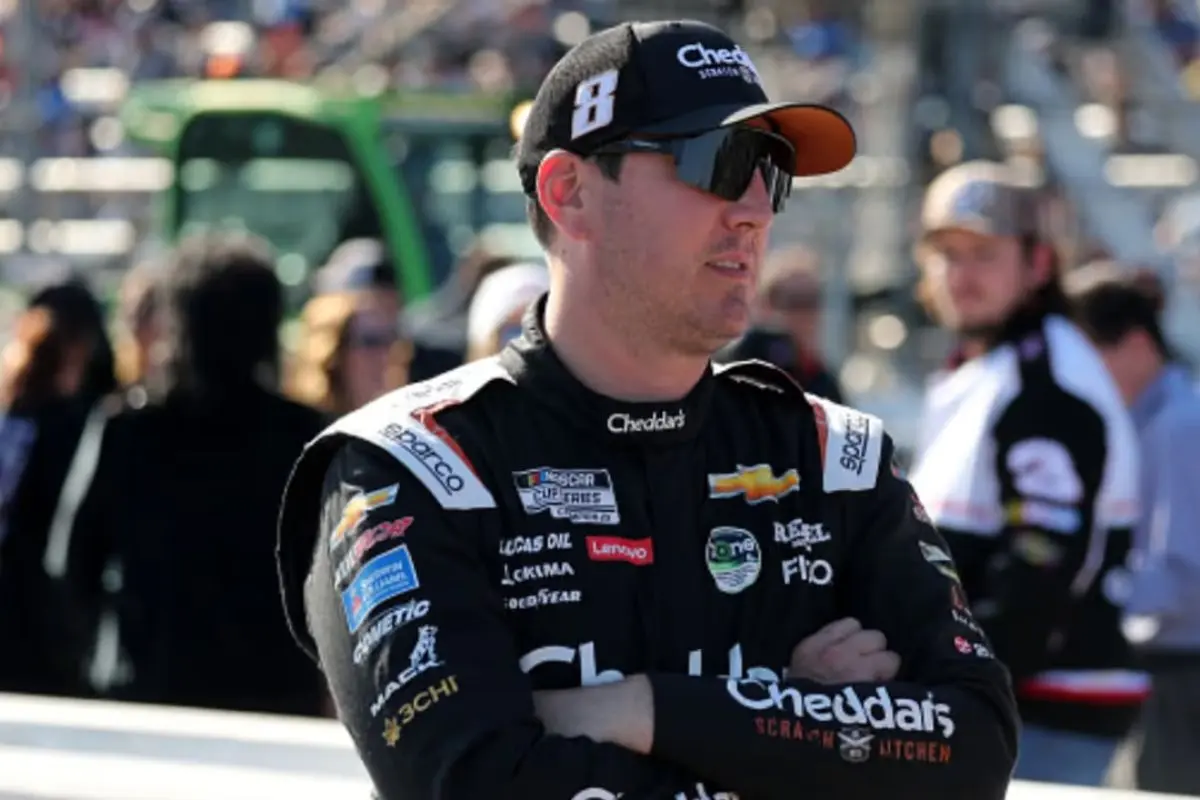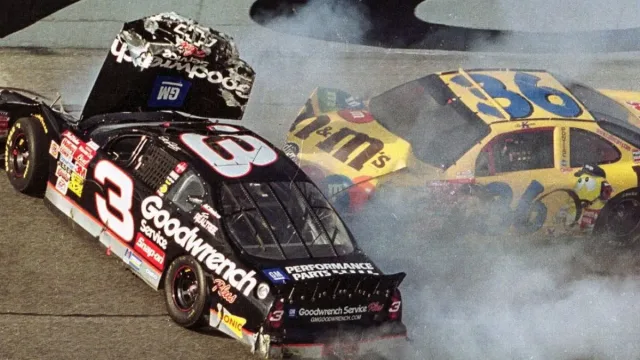The Daytona 500 loses its legendary status as superspeedway racing trends take over, leaving fans and drivers questioning what happened to the race that once defined NASCAR. With stars like Kyle Larson and Kyle Busch raising concerns about the growing unpredictability, many are wondering: has the Great American Race lost its magic? How this historic event has changed, and what could be done to bring back its glory.
Key Highlights
- Superspeedway racing trends have introduced unpredictability, affecting the Daytona 500’s traditional prestige and significance.
- Kyle Larson and Kyle Busch criticize the race’s randomness and diminished driver skill emphasis.
- Recent unpredictable winners at Daytona 500 have not shown consistent racing excellence afterward.
- Declining TV viewership and changes in race format contribute to the Daytona 500’s reduced allure.
- Denny Hamlin suggests car design changes to address unpredictability and improve race competitiveness.
The Changing Perception of the Daytona 500
How has the perception of the Daytona 500 evolved over the years? Traditionally viewed as the pinnacle of NASCAR racing, the Daytona 500 was once a race that cemented a driver’s legacy.
However, recent years have seen this perception shift dramatically. The iconic race, once synonymous with glory and prestige, now seems to be losing its distinct status amid a growing trend of superspeedway racing.
Factors contributing to this shift include the elimination of extensive practice weeks, the relocation of the Clash from Daytona to short ovals, and changes in the superspeedway package. These alterations have diminished the unique allure and competitive edge that once defined the race.
In addition, a decline in TV viewership and the general popularity of NASCAR during the modern era has compounded this issue. The evolving dynamics within motorsports have, as a result, undeniably altered how both drivers and fans regard the Great American Race.

Kyle Larson and the Decline in Prestige of the Great American Race
As the perception of the Daytona 500 has evolved, remarks by prominent drivers like Kyle Larson bring the ongoing debate into clearer view.
In 2018, Larson’s assertion that the Chili Bowl, a dirt-track event, held more significance than the Daytona 500, exposed a shift in sentiment among some racers. This perspective, while striking, highlights a broader dialogue about the race’s changing allure.
Historically revered, the Daytona 500’s prestige is now scrutinized, with critics pointing to Next Gen cars and superspeedway racing trends as culprits in the decline.
The introduction of these cars has shifted the dynamics, leading to pack racing and limited passing opportunities, where drafting, once an art form, is eclipsed by strategy-driven races.
Such changes, while not diminishing the race’s spectacle on TV, seemingly detract from the driver skill and excitement that once defined the event, challenging its status as the preeminent race in NASCAR’s calendar.
Kyle Busch’s Criticism and Unpredictable Daytona 500 Wins
Kyle Busch’s blunt criticism of the Daytona 500, particularly after the 2024 race, highlights a growing discontent among NASCAR’s elite regarding the event’s increasing unpredictability. Busch, a two-time NASCAR Cup Series champion, expressed dismay at the randomness that now characterizes this storied race, lamenting the difficulty faced by top drivers in achieving victory.
“I felt disgraceful myself as a race car driver wanting to go fast and lead laps and win the Daytona 500.” – Kyle Busch
The unpredictability is emphasized by recent winners like Michael McDowell, Austin Cindric, and Ricky Stenhouse Jr., who each secured their sole season win at Daytona.
Historically, the Daytona 500 has been a stage for both underdog victories and accomplishments by Hall of Fame drivers. However, the current trend suggests a shift, as evidenced by the lack of follow-through success seen in recent victors.
In contrast, past winners like Matt Kenseth, Jimmie Johnson, and Denny Hamlin showcased consistent excellence. This shift raises questions about the race’s evolving nature and its implications for NASCAR’s competitive landscape.

Superspeedway Racing Trends and Their Impact
Uncertainty has become the defining element of superspeedway racing, transforming the Daytona 500 from a display of skillful dominance to a lottery-like spectacle.
Parity racing, though initially accepted for its equitable approach, has inadvertently distorted NASCAR’s premier event. The trend towards unpredictable outcomes was dramatically depicted during the fall race at Talladega, where an unprecedented 28-car pileup marked the largest ‘Big One’ in NASCAR history.
The implications of such randomness are profound, particularly for a race that once represented racing excellence. As drivers and teams grapple with these dynamics, NASCAR’s efforts to tweak the racing package signal a recognition of the problem.
However, the challenge remains: how to balance the desire for competitive equality with the need to restore the Daytona 500’s lost prestige as a test of true racing mastery.
Denny Hamlin’s Proposed Solution for Superspeedway Racing
Denny Hamlin, known for his outspoken nature, has entered the conversation surrounding the issues plaguing superspeedway racing with a bold proposition aimed at addressing the unpredictable nature of events like the Daytona 500.
Hamlin, alongside Kyle Busch, is never one to shy away from controversial opinions, and his insights on the superspeedway package echo widespread concerns. He identifies excessive drag and horsepower as critical issues, hindering drivers from making bold moves due to the Next Gen car’s design.
Hamlin advocates for a reduction in horsepower and drag, suggesting “going down 150 horsepower” and utilizing a smaller tapered spacer on superspeedways. This, he argues, would facilitate aggressive, multi-wide moves, thereby enhancing the competitiveness and excitement of races.
“A lot of it is poo poo because we’re running too much horsepower at the plate tracks. The car makes too much drag; it has way too big of a spoiler.”
“If I’m going to fix NextGen superspeedway racing, I’m going down 150 horsepower or whatever it might be with the Cup cars on the speedways and taking a ton of drag out of the car… Go back down to a smaller tapered spacer for superspeedways, and that will allow us to make more aggressive, three or four-wide moves. When we get a run, we will take it versus staying in line.” – Denny Hamlin
While NASCAR’s focus remains on short-track solutions, Hamlin’s analytical approach highlights a potential shift in strategy, urging for foundational changes rather than superficial fixes to restore the race’s legendary excitement.

News in Brief: Daytona 500 Loses Its Legendary Status
The Daytona 500’s shifting reputation emphasizes the evolving nature of superspeedway racing, with drivers like Kyle Larson and Kyle Busch highlighting concerns over its unpredictability and diminishing prestige. These trends reflect broader changes in the sport, as increased randomness can overshadow driver skill and strategy.
Denny Hamlin’s proposed solutions aim to restore competitive balance, suggesting structural adjustments could mitigate issues. Ultimately, the race’s future depends on reconciling traditional appeal with modern racing dynamics to maintain its legendary status.
ALSO READ: Fans Lash Out Over 23XI Racing’s Bland Designs as Denny Hamlin Defends the Choices
